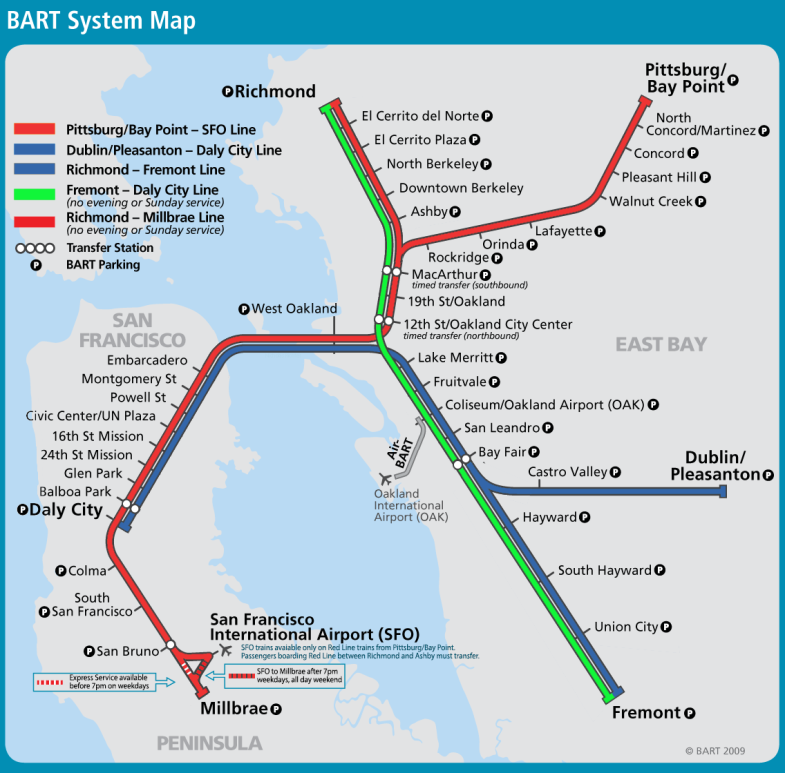BART Trip Planner offers a streamlined approach to navigating the Bay Area’s public transportation system. This guide delves into the design, development, and implementation of a user-friendly application, addressing the diverse needs of commuters, tourists, and students alike. We’ll explore the technical architecture, data integration strategies, and user experience considerations crucial for creating a successful and reliable BART trip planning tool.
From understanding user needs and integrating real-time data to designing an intuitive interface and implementing robust features, we cover all aspects of building a comprehensive BART trip planner. This includes exploring advanced features like multi-modal transportation integration and addressing potential challenges like data inconsistencies and scalability. The goal is to create an application that is not only functional but also enjoyable and accessible to all users.
Features and Functionality of a BART Trip Planner
A robust BART trip planner needs to go beyond basic route finding; it must offer a seamless and informative user experience, integrating various features to meet the diverse needs of commuters. This section details the core and advanced functionalities of such a planner, considering user needs and algorithmic choices.
Core Features of the BART Trip Planner
The core functionality of any effective BART trip planner centers around providing users with efficient and accurate journey information. This includes the essential components necessary for a successful commute. These features form the foundation upon which more advanced functionalities are built.
- Route Planning: The planner should provide multiple route options between any two BART stations, considering factors such as travel time, number of transfers, and walking distance. The results should be clearly presented, ideally with a map visualization.
- Fare Calculation: Accurate fare calculation is crucial. The system should automatically determine the fare based on the selected route and the type of ticket (e.g., Clipper card, single-ride ticket). It should also display the fare in a clear and understandable manner.
- Real-Time Updates: Real-time information on train delays, cancellations, and service disruptions is essential. The planner should integrate with BART’s live data feeds to provide users with up-to-the-minute information, allowing them to adjust their travel plans accordingly.
- Trip Alerts: Users should be able to set up alerts for potential delays or disruptions on their chosen route. These alerts can be delivered via email, SMS, or push notifications, ensuring users are informed proactively.
Advanced Features of the BART Trip Planner
Beyond the core functionalities, advanced features enhance the user experience and cater to more complex travel scenarios. These features differentiate a basic trip planner from a truly helpful and comprehensive tool.
- Multi-Modal Transportation Integration: Integrating with other transit systems (e.g., Muni, AC Transit) allows users to plan journeys that involve multiple modes of transportation. This is crucial for users whose commutes involve travel beyond the BART system.
- Trip Scheduling: This feature allows users to plan trips for specific times in the future, providing them with information about train schedules and potential delays at that time. This is particularly useful for appointments or events.
- Saved Routes: The ability to save frequently used routes simplifies the planning process for regular commuters. Users can quickly access their saved routes and receive updates on their status without having to re-enter their origin and destination each time.
Trip Planning Algorithms for BART
The choice of trip planning algorithm significantly impacts the planner’s performance and accuracy. Different algorithms have different strengths and weaknesses, and the best choice depends on the specific characteristics of BART’s system.
A common algorithm is Dijkstra’s algorithm, which finds the shortest path between two nodes in a graph. However, for BART, modifications might be needed to account for factors like transfer times, platform changes, and real-time delays. A* search is another option, offering faster performance by incorporating a heuristic function to estimate the remaining distance to the destination. Considering the complexity of BART’s network and real-time data integration, a hybrid approach combining different algorithms might be most effective.
User Stories Illustrating Feature Functionality
- As a commuter, I want to see multiple route options between my origin and destination so I can choose the fastest or most convenient one.
- As a budget-conscious traveler, I need accurate fare calculation based on my chosen route to plan my expenses effectively.
- As a frequent BART rider, I want to receive real-time updates about delays or disruptions to avoid unexpected delays.
- As a person with a multimodal commute, I need the trip planner to integrate with other transit systems, like Muni, to plan my entire journey.
- As a busy professional, I want to schedule trips in advance to ensure I arrive on time for important appointments.
- As a regular commuter, I want to save my frequently used routes for quick and easy access.
Last Recap
Ultimately, a successful BART Trip Planner hinges on a seamless blend of technical proficiency and user-centric design. By carefully considering user needs, integrating reliable data sources, and implementing intuitive features, we can create a tool that significantly enhances the commuting experience in the Bay Area. The detailed analysis presented in this guide provides a solid foundation for developers and stakeholders alike, paving the way for a truly impactful and efficient public transportation planning solution.

